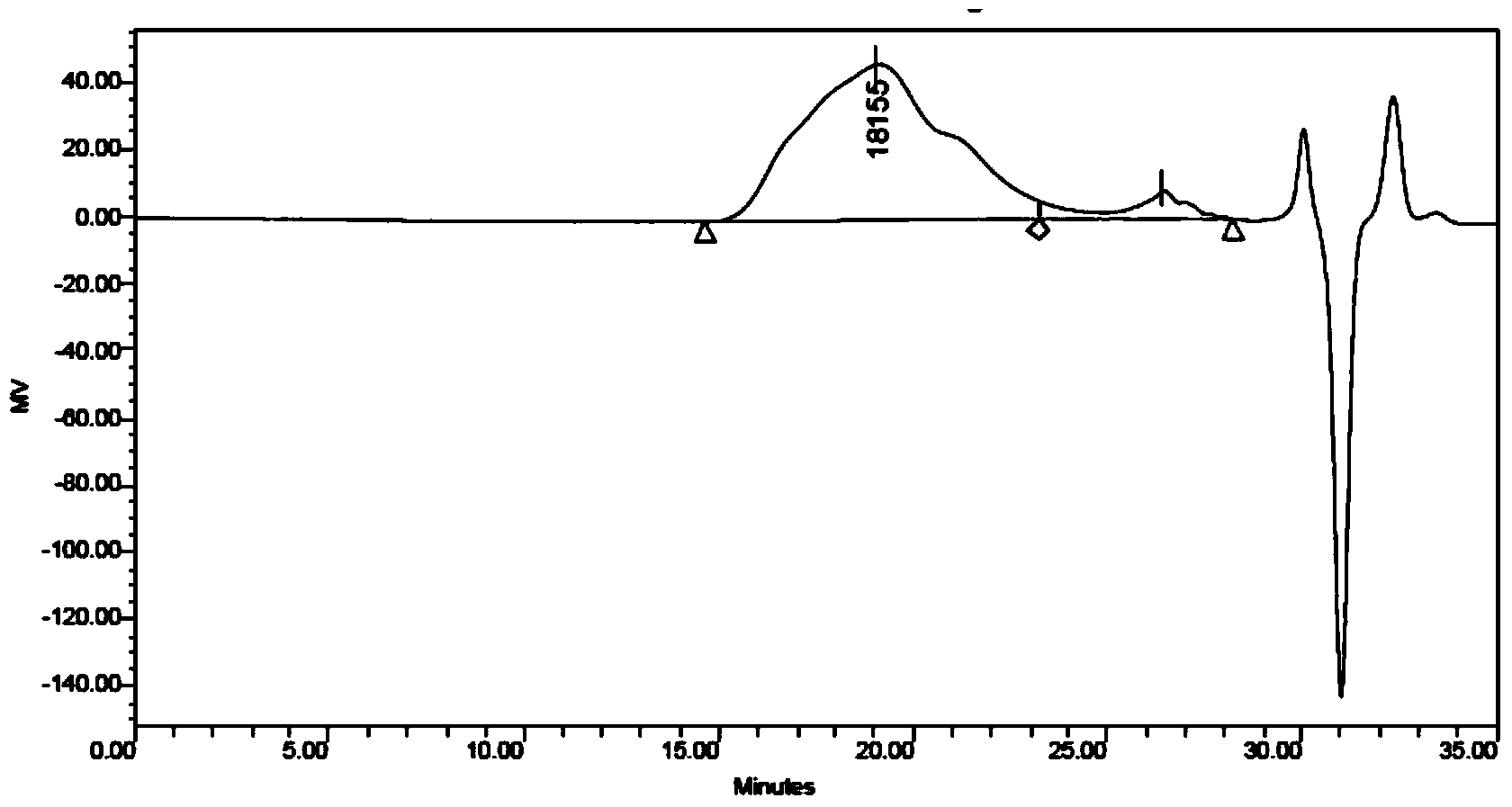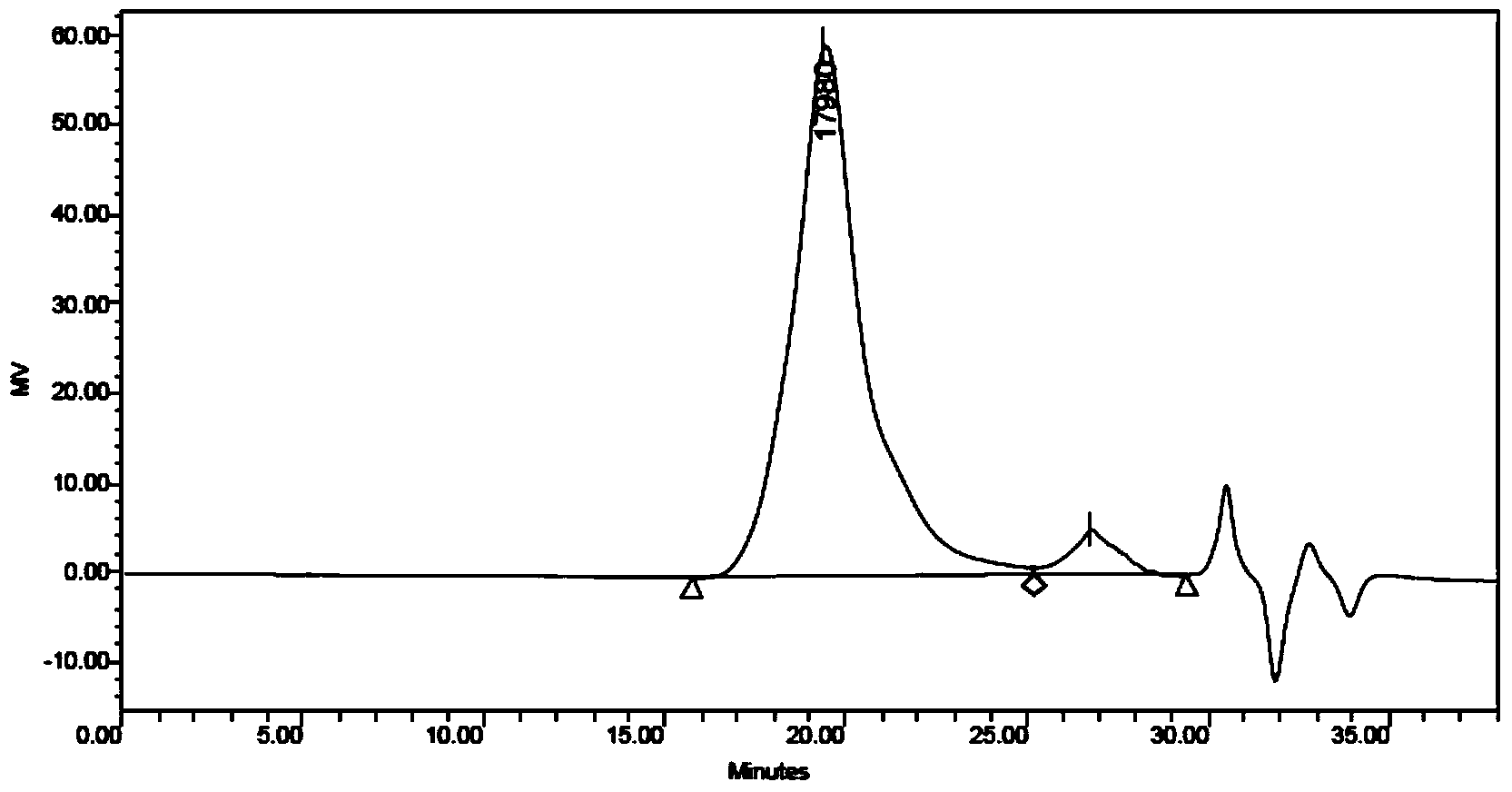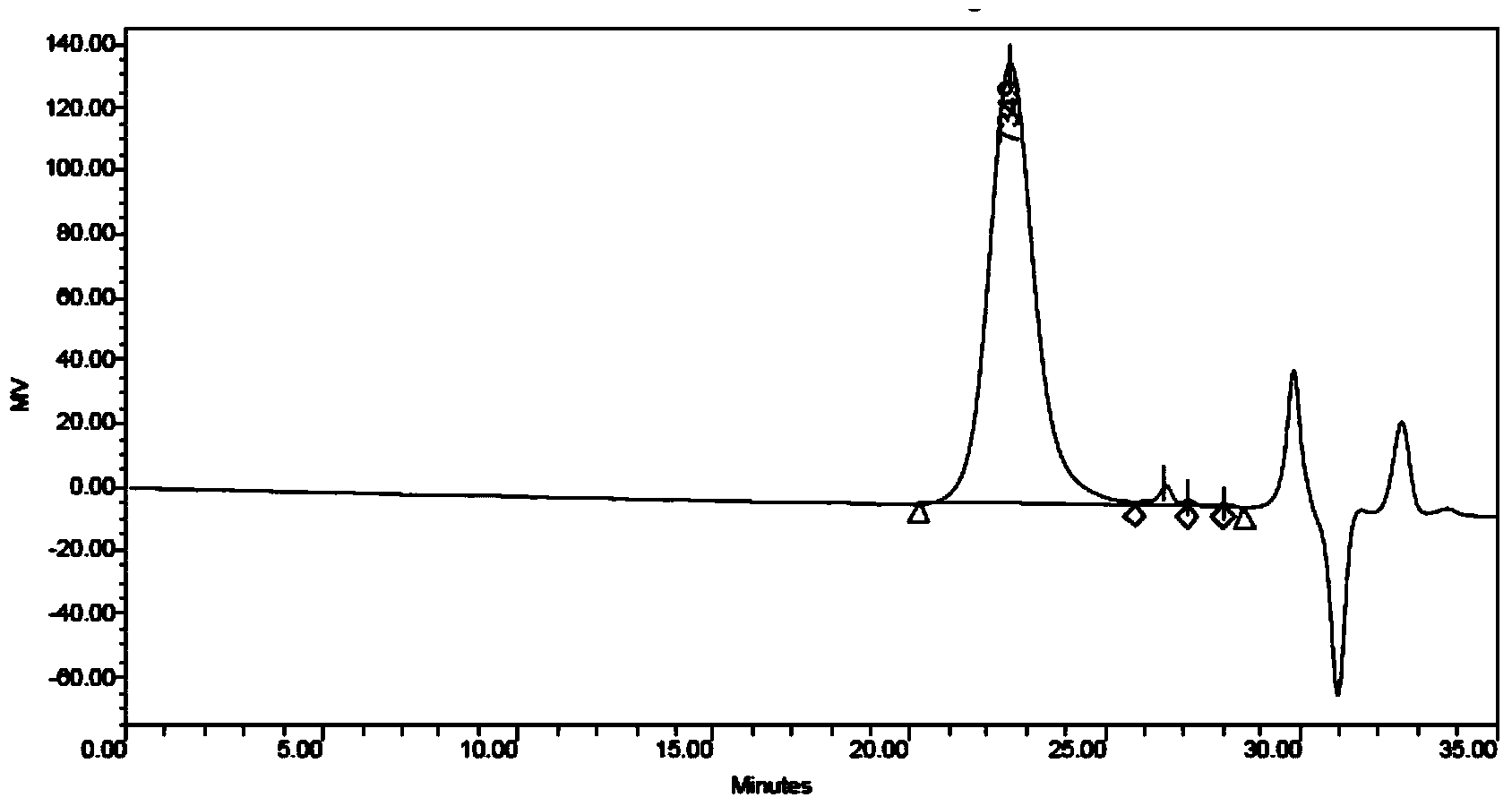Functional segmented copolymer based on living polymerization as well as preparation method and application of copolymer
A block copolymer and living polymerization technology, applied in the direction of pigment paste, etc., can solve the problems of poor controllability of reaction, increased cost, cumbersome production process, etc., and achieve strong controllability of polarity, improved polymerization ability, Good color development of paint film
- Summary
- Abstract
- Description
- Claims
- Application Information
AI Technical Summary
Problems solved by technology
Method used
Image
Examples
Embodiment D1
[0047] Embodiment D1 (instance of the present invention, prepared by RAFT method): 20.0 parts of propylene glycol methyl ether acetate, 6.51 parts of vinylimidazole, 14.41 parts of styrene, 0.67 parts of Part S, S'-bis-(α,α'-disubstituted methyl-α''-acetoxy) trithiocarbonate and 0.4 part of azobisisobutyronitrile, start stirring, replace nitrogen, and then heat up to 60 -65°C, keep warm for 5 hours, monitor the solid content of the system to the theoretical value, and take samples to detect the molecular weight distribution GPC (A) of the copolymerized block A. Next, add the pre-prepared mixture 6.07 parts of isobutyl methacrylate, 6.94 parts of 2-ethylhexyl acrylate, 14.61 parts of isooctyl acrylate and 0.40 parts of azobisisobutyronitrile dropwise within 2 hours, and continue to keep warm until solid up to standard. Finally, adjust the system solid content=50% discharge with propylene glycol methyl ether acetate.
[0048] The weight average molecular weight of the copolyme...
Embodiment D2
[0050] Embodiment D2 (instance of the present invention, prepared by RAFT method): 20.0 parts of propylene glycol methyl ether acetate, 10.55 parts of N,N-dimethylaminoethyl Esters, 14.02 parts of styrene, 0.95 parts of S,S'-bis-(α,α'-disubstituted methyl-α''-acetoxy) trithiocarbonate and 0.50 parts of azobisisobutyronitrile, start stirring , replace the nitrogen, then raise the temperature to 60-65°C, keep it warm for 5 hours, monitor the solid content of the system to the theoretical value, and take samples to detect the molecular weight distribution GPC (A) of the copolymerized block A. Then, within 2 hours, drop the pre-prepared mixture of 8.0 parts of methoxypolyethylene glycol methacrylate (Mw=400), 16.60 parts of isooctyl acrylate and 0.50 parts of azobisisobutyronitrile, and continue to keep warm until solid up to standard. Finally, adjust the system solid content=50% discharge with propylene glycol methyl ether acetate.
[0051] The weight-average molecular weight o...
Embodiment D3
[0053]Embodiment D3 (example of the present invention, prepared by RAFT method): drop into 14.29 parts of propylene glycol methyl ether acetate, 5.78 parts of styrene, 5.44 parts of maleic anhydride, 0.90 parts of Part S, S'-di-(α,α'-disubstituted methyl-α''-acetoxy) trithiocarbonate and 0.47 part of azobisisobutyronitrile, start stirring, replace nitrogen, and then heat up to 60 -65°C, keep warm for 5 hours, monitor the solid content of the system to the theoretical value, and take samples to detect the molecular weight distribution GPC (A) of the copolymerized block A. Next, 17.22 parts of isooctyl acrylate and 0.47 parts of azobisisobutyronitrile were added dropwise into the premix within 2 hours, and the temperature was continued until the solid content reached the standard. Lower the temperature to 80°C, put in 15.71 parts of Jeffamine M-1000 (Huntsman Company) and 4.29 parts of 2-aminomethylpyridine, heat up to 180°C for dehydration and keep the acid value below 1, and f...
PUM
| Property | Measurement | Unit |
|---|---|---|
| Amine value | aaaaa | aaaaa |
| Amine value | aaaaa | aaaaa |
| Amine value | aaaaa | aaaaa |
Abstract
Description
Claims
Application Information
 Login to View More
Login to View More - R&D
- Intellectual Property
- Life Sciences
- Materials
- Tech Scout
- Unparalleled Data Quality
- Higher Quality Content
- 60% Fewer Hallucinations
Browse by: Latest US Patents, China's latest patents, Technical Efficacy Thesaurus, Application Domain, Technology Topic, Popular Technical Reports.
© 2025 PatSnap. All rights reserved.Legal|Privacy policy|Modern Slavery Act Transparency Statement|Sitemap|About US| Contact US: help@patsnap.com



